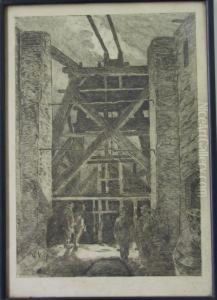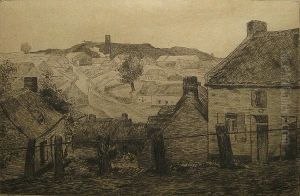Charles, Karl Meunier Paintings
Charles, also known as Karl Meunier, was a Belgian artist born in 1863. His artistic journey was marked by his adept skills in various mediums, including painting, printmaking, and sculpture, making him a versatile figure in the European art scene of the late 19th and early 20th centuries. Meunier's work was deeply influenced by the socio-economic changes of his time, particularly the Industrial Revolution and the conditions of the working class. This concern for the social issues of his era set him apart from his contemporaries and linked him with the broader Realist movement, which sought to depict everyday life with a critical eye.
Meunier's early work focused largely on the rural and urban working conditions in Belgium, showcasing his empathy towards the workers' plight and a keen eye for detail. His paintings and prints often featured the toils and struggles of factory workers, miners, and peasants, rendered with a realism that underscored the dignity and humanity of his subjects. As his career progressed, Meunier also became known for his monumental sculptures, which further emphasized his commitment to social themes. His sculptures, characterized by their powerful forms and expressive detail, served as public commemorations of the laboring class and were pioneering in their combination of social commentary with monumental art.
Throughout his career, Charles Meunier remained committed to exploring the social implications of the industrial age, making significant contributions to the realism movement and social art. His work not only provides a window into the socio-economic conditions of his time but also reflects a deep humanitarian concern. Meunier's legacy is that of an artist who used his craft to advocate for social change, bridging the gap between art and social consciousness. He passed away in 1942, leaving behind a body of work that continues to be celebrated for its artistic merit and social significance.


![[la Cylindreuse] (date 1884)](https://www.niceartgallery.com/imgs/819165/s/charles-karl-meunier-la-cylindreuse-date-1884-7ae3e81c.jpg)


